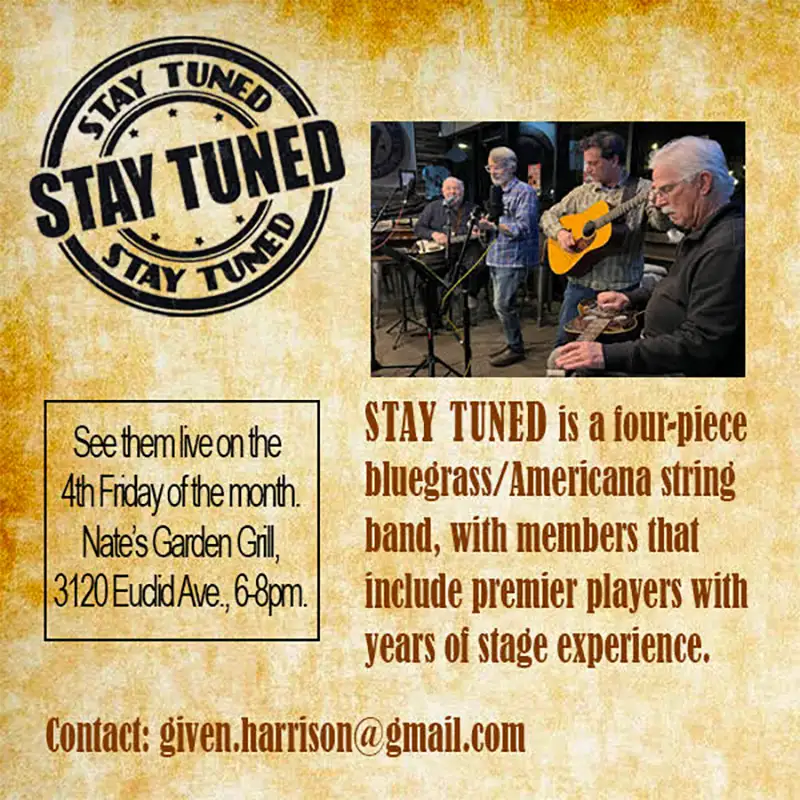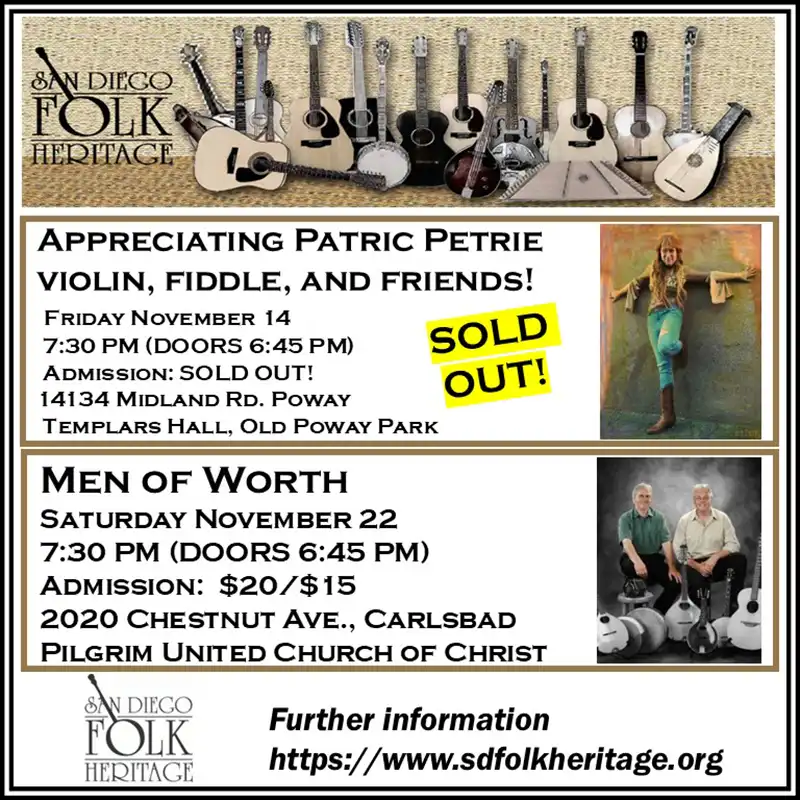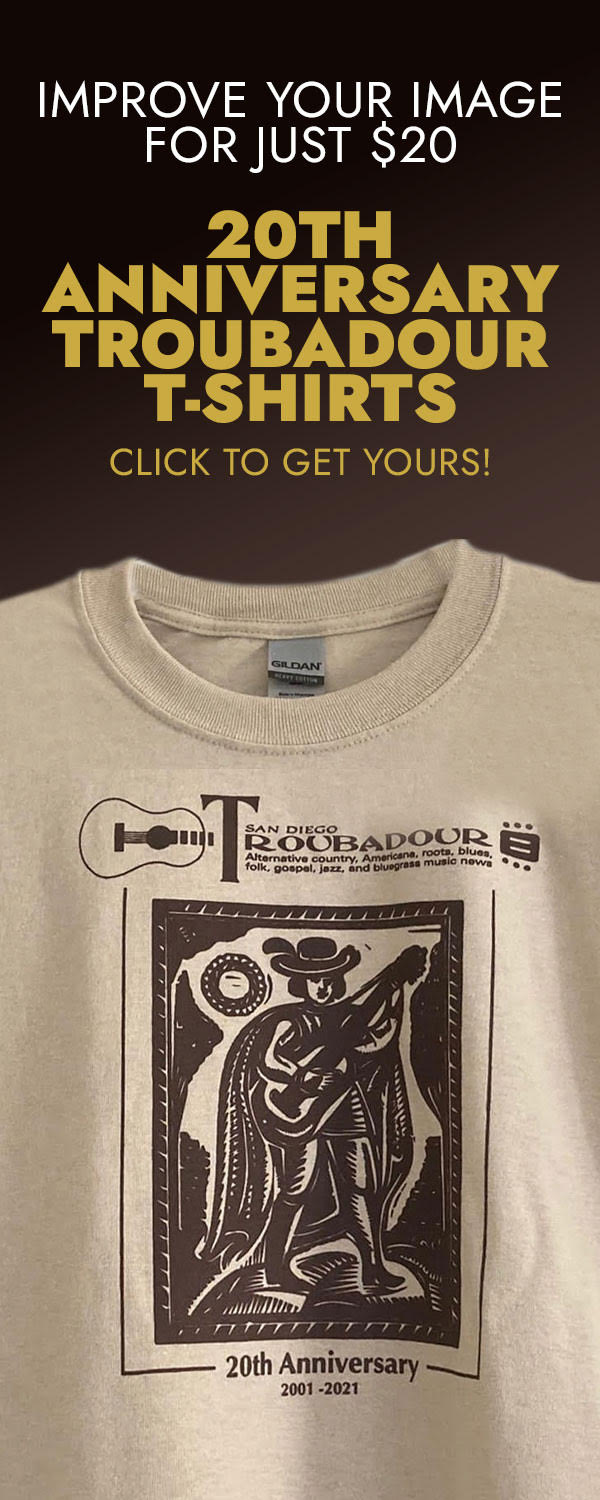Ask Charlie...
Roll Your Own II
Hello Troubadourians! Back in July I wrote about a project I had undertaken to purchase, modify, and upgrade three guitars. These guitars were to be “special usage” instruments that I wanted to add to my stable of usable guitars. For a while, nothing substantial happened on this project because the custom necks I ordered were still being made and I was busy with other things. Just as a brief review, I went shopping on the internet and bought three guitars from Dave’s Guitars in La Crosse, Wisconsin (http://davesguitar.com/). I purchased a Stratocaster as a platform to convert to a baritone, a Thinline Telecaster Reissue, and an Esquire to be set up as a dedicated open-tuned guitar. The basic instruments were Mexican Fenders, which are excellent platforms for modifying since they are inexpensive and usually almost as good as the American versions. Where they are deficient are in the parts that I would replace anyway.
The first investment was in a custom neck for each guitar. I had chosen Warmoth (www.warmoth.com/) to custom build the necks. While there are several companies that build upgraded Fender necks, Warmoth has the best variety of choices in neck wood, fingerboard wood, neck shape, fret type, as well as just about any cosmetic option you can imagine. But why a custom neck? I have either owned or played extensively many electric and acoustic guitars with necks of many shapes, sizes, and materials, and I have found a preference for a neck that is 1.75″ wide at the neck with a fairly deep V-shaped profile. This preference developed from my having had the pleasure of a long-term loan of an excellent old Martin D-28 when I was in my formative years of playing. A one-time encounter with a ’59 Les Paul at sixteen planted the seed that this preference extended to electric guitars as well. Back then, you had to search for a guitar that was “just right” and pay whatever you could negotiate for a vintage guitar. That is a rabbit-hole that went down once and I won’t go there again.
When I bought the Strat that is destined to be Baritone 2.0, it was described as being Daphne Blue. I’m not an expert on Fender colors so I took that at face value. I wanted the headstock to match the body so I ordered an extra wide Strat neck that measures 1.875″ at the neck (to accommodate the bigger strings) with the headstock painted Daphne Blue. I didn’t think about it again until I opened the box from Warmoth and discovered that the headstock didn’t match the body. I turns out that the guitar was actually Sonic Blue, which is several shades lighter than Daphne Blue. I struggled with what to do about it and finally decided on a very “Fender” solution. Many Fender guitar models have at one time or another sported a racing stripe in a color that was complementary to the body color. So I contacted local finishing wizard Marty Bell (http://martybellfinishing.com/) and had him add a competition stripe in Daphne Blue to the Sonic Blue body. It looks excellent with the new neck. Marty also installed the decals on the necks and applied a light coat of clear finish over them to make them look even more authentic.
Full disclosure: I think that guitars look strange and unfinished without the normal branding on the headstock. This is why I started each guitar with an authentic Fender guitar and also why I chose to use Warmoth necks, which are authentic and licensed by Fender, so putting a Fender decal on them is legitimate.
My open-tuned Esquire is the simplest of the three but still has detailed modifications that are integral to the tone and feel of the guitar. The Tele/Esquire neck is one piece quarter-sawn maple. This construction adds to the stability and tonality of Tele-style guitars. It also adds a certain “something-something” to a guitar in an open tuning. Keith Richards knows what that’s about and I dig what he does with that platform. I love the ’69 Thinline reissues. They’re light weight and they have a certain airiness that I find endearing. A good one can sound almost acoustic and still get all Tele-Twang and cut through a band mix. Both tonalities are enhanced by the mahogany/ebony construction of the neck with the mahogany enhancing the warmth in the midrange frequencies and the ebony adding detail to the highs without harshness.
I’ve always preferred set-neck guitars to Fender-style bolt-on neck guitars, mainly out of habit (or snobbishness) but I know that with a tight neck joint, the sustain and tonal transfer for a bolt-on neck is virtually indistinguishable from a guitar with set-neck construction. I can report with pleasure that the neck joints between the Mexican Fender bodies and the Warmoth necks are extremely tight. I’ve strung up the Teles (the Strat/baritone with its vibrato bridge is going to be a little more difficult to balance and setup) and their acoustic tone and sustain rivals that of my set-neck Collings CL. I say acoustic tone because I purposely re-assembled the guitars without their electronics installed. I’m changing the pickups in the Tele to Lollars (www.lollarguitars.com/) and I’m reconfiguring the control electronics in all of the guitars, which requires new pickguards for the Tele and the Strat. While I wait for the custom pickguards that I’ve ordered from Pickguardian (www.pickguardian.com/), I’ll be playing and adjusting their action and setup independent of the electronics. I’ve found that when working on the setup of an electric guitar and you get an electric guitar to play, feel, sound, and sustain as best as it can without the influence of the pickups, it is much easier to adjust the electronics to match and compliment the true voice of the guitar. This is far more important than you might think. The magnetic fields exerted by the pickups on the strings can affect the feel, sound, sustain, and tone of the guitar both positively and adversely. Knowing what the guitar is capable of before adding the variable of its electronics can help you get the most out of your guitar. I will also give you valuable insight into what the pickups really sound like. This will point you to finding the pickups that sound like you want them to and that best compliment the basic tonality of the guitar. When the character of the pickups is complimentary to character of the guitar, you’ll likely find it will work with you rather than against you.
Need to know? Just ask… Charlie (ask.charlie@hotmail.com)








